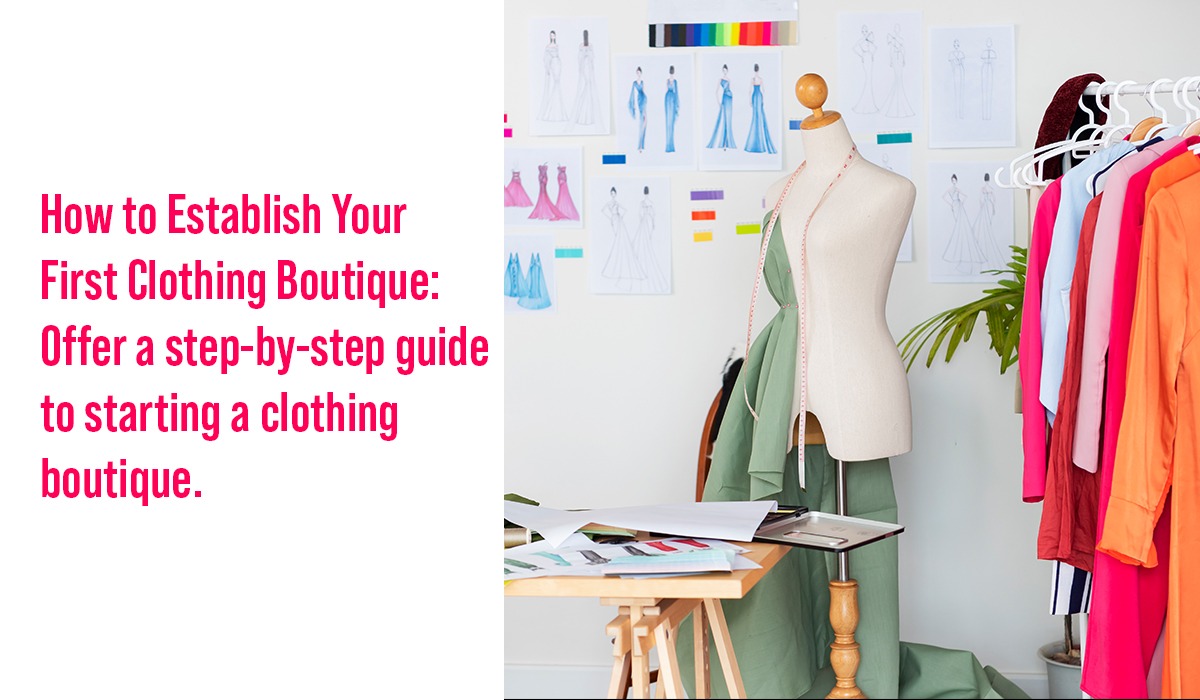Currently Empty: 0.00

How to Establish Your First Clothing Boutique
If you are starting your own clothing boutique, then you must be a person who loves fashion and has an entrepreneurial spirit. What fuels you might be an exclusive taste or the need to serve only a particular part of the market; both qualities will help make your shop great. This is a comprehensive guide that will help one get through all the steps to start up their first clothing store like our store Eden the Shoppe:
Step 1: Define Your Concept and Niche
Boutique definition begins with conceiving its idea. It may be ready-to-wear clothes, luxury fashion, old-fashioned outfits, or niche markets like eco-friendly fashion and athleisure wear. We can therefore position ourselves in the market by understanding our customers’ types and tastes.
Step 2: Conduct market research.
Make sure that your boutique concept has been validated by conducting thorough market research. Look at competitors within this niche and identify their weaknesses as well as their strengths. Take time to understand consumer demand, pricing trends, and what’s currently selling within your target market segment, because this information will enable you to make the top boutique in your place and make the right purchase decisions and price items accurately Like Eden The Shoppe is Top Boutique in Hyderabad.
Step 3: Devise a Business Plan
Develop an explicit business plan for your boutique that articulates its mission, target market, competitive analysis, marketing strategy, and financial projections. A well-written business plan helps you remain on course and also proves to be useful for internal investment or sourcing partners.
Part 4: Choosing the Right Location
In order to be successful, you must make certain that you choose the correct location for your clothing boutique store. Consider such factors as pedestrian traffic, proximity of your target market, competition in the area, and affordability of rents. This would enable more customers to be attracted to your boutique through attractive retail environments.
Step 5: Register Your Business and Obtain Permits
Make sure that you have registered your shop as a legal entity and secured all necessary permits and licenses required for operation in your jurisdiction. This may include business licenses, sales tax permits, zoning permits, etc. To ensure it operates legally therefore avoiding possible penalties it is important to observe these local regulations.
6th step: Acquire your inventory from sources
Get in touch with reliable suppliers and wholesalers to acquire your inventory. For instance, depending on the niche, you may have to go for local designers, international brands, or exclusive distributors. Maintain a balance of trendy pieces and timeless classics so as to appeal to a wide customer base.
Step 7: A captivating store layout
The design of an appealing store layout is also essential because it should reflect the brand’s aesthetic and improve the shopping experience. Factors such as store flow, product placement, and lighting must be taken into account while decorating the store itself. This way, it will be easy for customers to browse through different clothing sections and increase sales opportunities.
Step 8: Establish a marketing strategy
Use a multifaceted marketing approach to sensitize clients. To advertise your products on an Instagram platform or access potential customers, exploit Facebook as a resourceful social media site. Employ fashion influencers, host launches, or give discounts to get more people into your clothing boutique.
Step 9: Employ and train staff
Hire knowledgeable staff who share the same vision as your brand. Equip them with in-depth information about products, customer service skills, and marketing techniques. Exceptional treatment can go a long way in securing future business through referrals.
Step 10: Launching Your Clothing Boutique
Create excitement for your retail clothing boutique by launching it through an opening ceremony that will attract your target audience. Show off your fashion selections, have great discounts, and make your shopping experience memorable. Always ask customers if they have any comments to make or suggestions to help improve what you are offering.
Step 11: Monitor performance and adapt
Consistently evaluate the performance of your shop by comparing sales numbers, customer loyalty rates, and how fast you sell out every week. Take responses from customers into consideration, then change tactics according to business trends in order to remain competitive within the existing market requirements.
Step 12: Exploit and diversify
As your clothing boutique grows, think of ways to expand the products you offer or open more branches. Think about e-commerce as an avenue to reach a wider customer base beyond your literal address. Always be innovative and keep up with style trends for sustainable growth.
In conclusion
starting your own clothing shop is a profitable journey that incorporates inventiveness into the business. You can set a strong foundation for your clothing boutique’s success by following the above steps, such as determining your niche, carrying out thorough research, preparing a viable business plan, locating it strategically, obtaining quality inventory, and employing effective marketing skills. Remember that understanding your target market.
